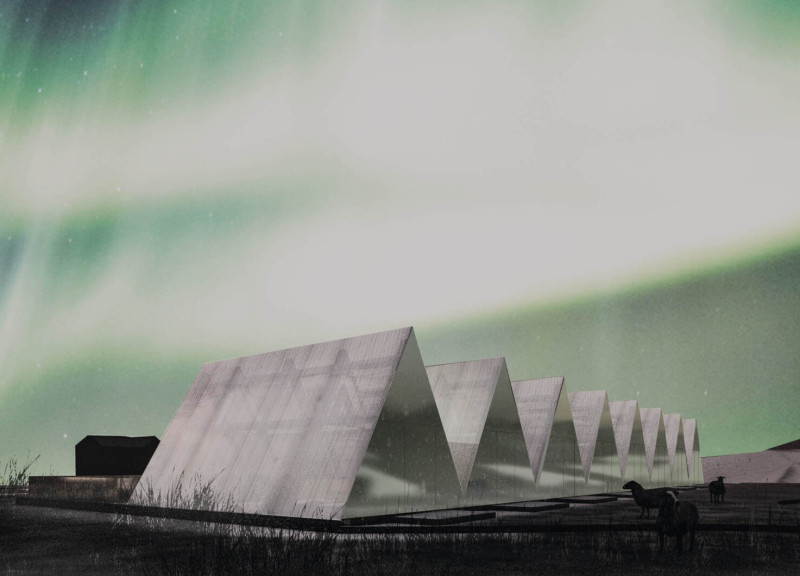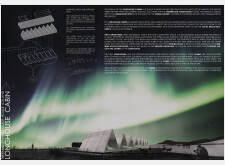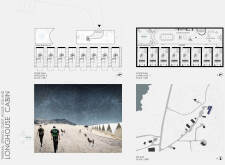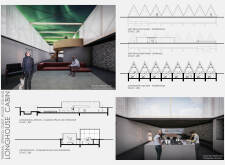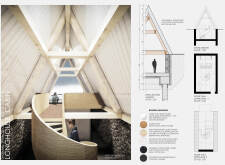5 key facts about this project
The Thermal Springs Guest House is located in Iceland, designed as a modern interpretation of traditional longhouses. It serves as a unique accommodation option, blending both communal and private spaces while drawing from the architecture of the Viking settlers. The design places a strong emphasis on sustainability and a close relationship with the natural environment, reflecting aspects of Icelandic cultural heritage.
Architectural Layout
A key feature of the design is its thoughtful organization of space. The community area is situated underground, creating a distinct atmosphere. This area has a longitudinal layout that mirrors traditional longhouses, allowing natural light to streams through upper glass sections. This design not only enhances the welcoming feel of the space but also aids in maintaining warmth, which is essential in a cold climate.
Guest Room Design
The guest rooms are located on the upper level and designed as bright cabins that resemble Viking homes. These rooms use translucent roofs and transparent front walls, providing views of the surrounding landscape, including Hverfjall volcano. The mirrored glass on the exterior allows guests to enjoy private moments while still reflecting the beauty of the Icelandic surroundings.
Material Selection
Material choice plays a crucial role in the construction of the guest house. Local birch is used primarily for the roof framework, with Siberian pine as an alternative if necessary. Basalt stone is selected for basement walls and floors, establishing a strong connection to the region's geology. These materials not only emphasize sustainability but also help create an architectural style that fits well within the local context.
Community Engagement Features
The communal space features a centrally located kitchen, promoting interaction among guests. This design element is inspired by historical practices, where the cooking area is at the heart of social activity. Adjacent to the common area, a patio with an outdoor hot tub adds to the overall experience, providing a space for relaxation and socializing. Guests can enjoy their surroundings while engaging with each other in a warm, inviting atmosphere.
The thoughtful integration of these features leads to a design that respects the local history while addressing the needs of modern visitors, resulting in a comfortable and functional space for relaxation and connection.


